Sports
Video surfaces of Shedeur Sanders' 101 mph speeding pullover as cops reference mystery woman
Shedeur Sanders’ personal life has been thrust into the spotlight after video of the rookie Browns quarterback being pulled over for allegedly speeding over 100 mph in Ohio this week surfaced. According to the June 17 incident report obtained by The Post, Sanders — the son of NFL Hall of Famer Deion Sanders — was […]

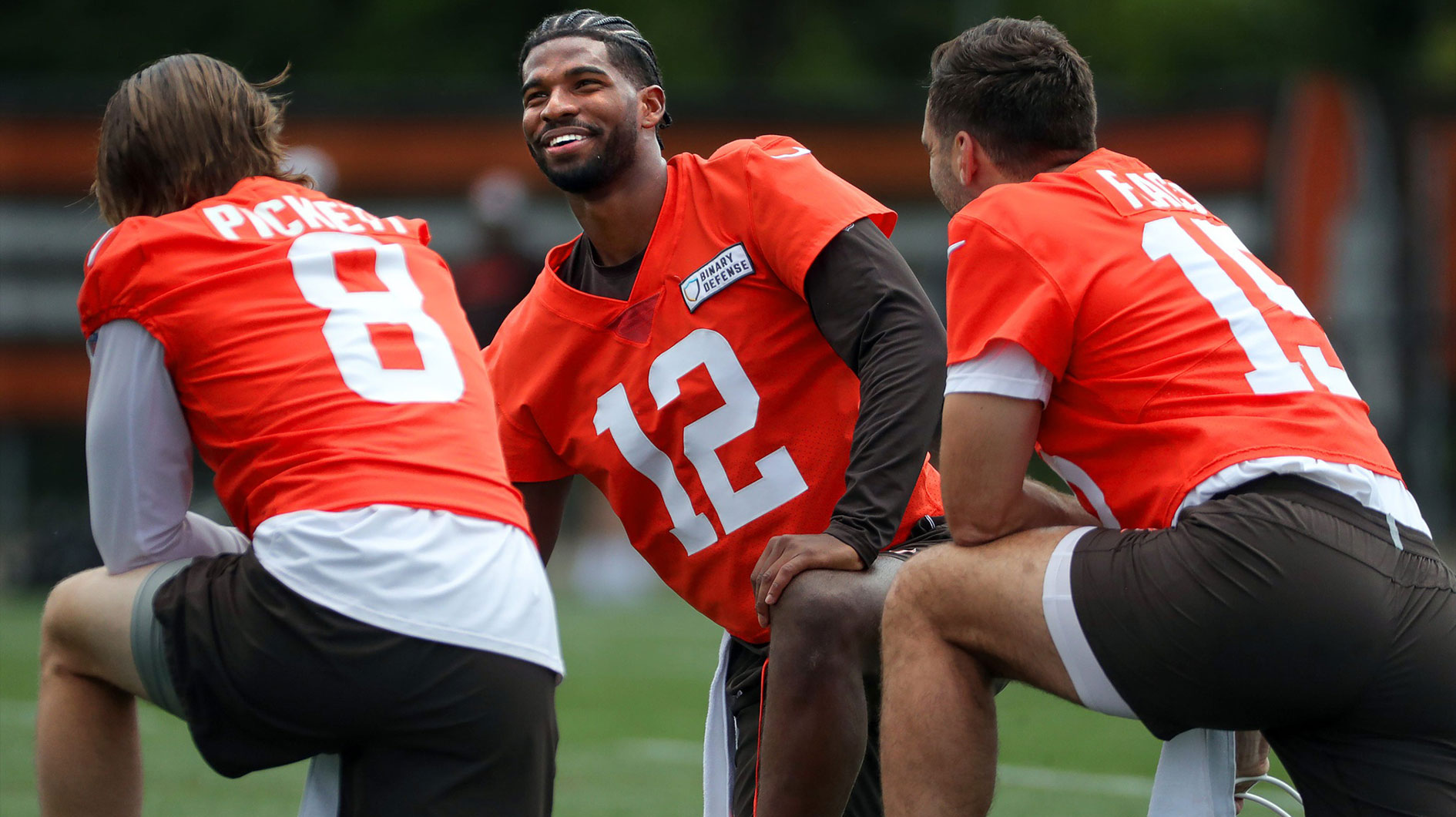
Shedeur Sanders’ personal life has been thrust into the spotlight after video of the rookie Browns quarterback being pulled over for allegedly speeding over 100 mph in Ohio this week surfaced.
According to the June 17 incident report obtained by The Post, Sanders — the son of NFL Hall of Famer Deion Sanders — was cited for allegedly driving 101 mph in a 60-mph zone, while a woman identified as Jasmine Hammond was driving in another vehicle.
Advertisement
“I got you at 101 miles per hour,” an officer is heard in bodycam footage. “I got her at 92.”

Shedeur Sanders’ personal life has been thrust into the spotlight after he was pulled over earlier this week. Getty Images

Footage of Shedeur Sanders being pulled over in June 2025. Strongsville PD
Although the relations between Sanders, 23, and Hammond are not entirely clear, an officer could be heard stating in the body cam footage, “I’m going to give your girl a break.”
“I’m gonna cut you a break,” the officer said to Sanders in the clip. “I’m not going to give her a ticket … but 101, I got a dash cam and stuff, man, like…”
With the citation, Sanders can either pay a $250 fine or fight the ticket in court on July 3, according to TMZ.

A Jasmine Hammond was also identified when Shedeur Sanders was pulled over in June 2025. Strongsville PD
The former Colorado quarterback’s driving has been at the center of headlines in recent days after Cleveland.com reported Thursday he was pulled over earlier this month by Ohio State Highway Patrol for allegedly going 91 mph in a 65-mph zone.
Advertisement
“I’ve made some wrong choices personally, and I can own up to them,” Sanders recently said at Browns teammate David Njoku’s charity softball game, according to Pro Football Talk.
“I made some, you know, not great choices. … I learned.”

Shedeur Sanders celebrated in April 2025 after being taken by the Browns in the fifth round of the NFL draft. ExclusiveAccess.Net / Shutterstock
Sanders is currently preparing for his first NFL season after a wild draft experience in April.
Regarded as one of the most polarizing prospects in the 2025 class, Sanders slid all the way to the fifth round when he was taken 144th overall by Cleveland.

Shedeur Sanders is the son of NFL Hall of Famer Deion Sanders. AP
He joined a crowded QB room of Joe Flacco, Kenny Pickett and fellow rookie Dillon Gabriel, who was taken in the third round of this year’s draft.
Starter Deshaun Watson is expected to miss significant time while he recovers from an Achilles injury.
The Browns host the Bengals in Week 1 and it remains to be seen who Cleveland’s QB1 will be.
Sports
Newport Beach 12-and-under boys nab USA Water Polo Junior Olympics silver
IRVINE — The Newport Beach Water Polo Club 12-and-under boys certainly became more than familiar with Del Mar during the course of the club season. The teams played six times, and Tuesday’s gold medal match of the USA Water Polo Junior Olympics might have been the closest of all. In the end, Del Mar goalkeeper Braxton Harp […]

IRVINE — The Newport Beach Water Polo Club 12-and-under boys certainly became more than familiar with Del Mar during the course of the club season.
The teams played six times, and Tuesday’s gold medal match of the USA Water Polo Junior Olympics might have been the closest of all.
In the end, Del Mar goalkeeper Braxton Harp came up big.
Harp earned MVP honors, making two saves in a penalty shootout that Del Mar won 4-1 at Woollett Aquatics Center.
The teams were tied 10-10 after regulation, but only Pierce Clymer could score for Newport Beach in the shootout that followed.
“Honestly, they played their hearts out,” Newport Beach 12U coach Konstantinos Koulouris said of his silver-medal winners. “They played so good. We were locked in from the beginning and very focused. I’m so proud of them for all of the performances that they had the whole weekend. It’s hard to beat a team that you’ve lost to four times, you know.”
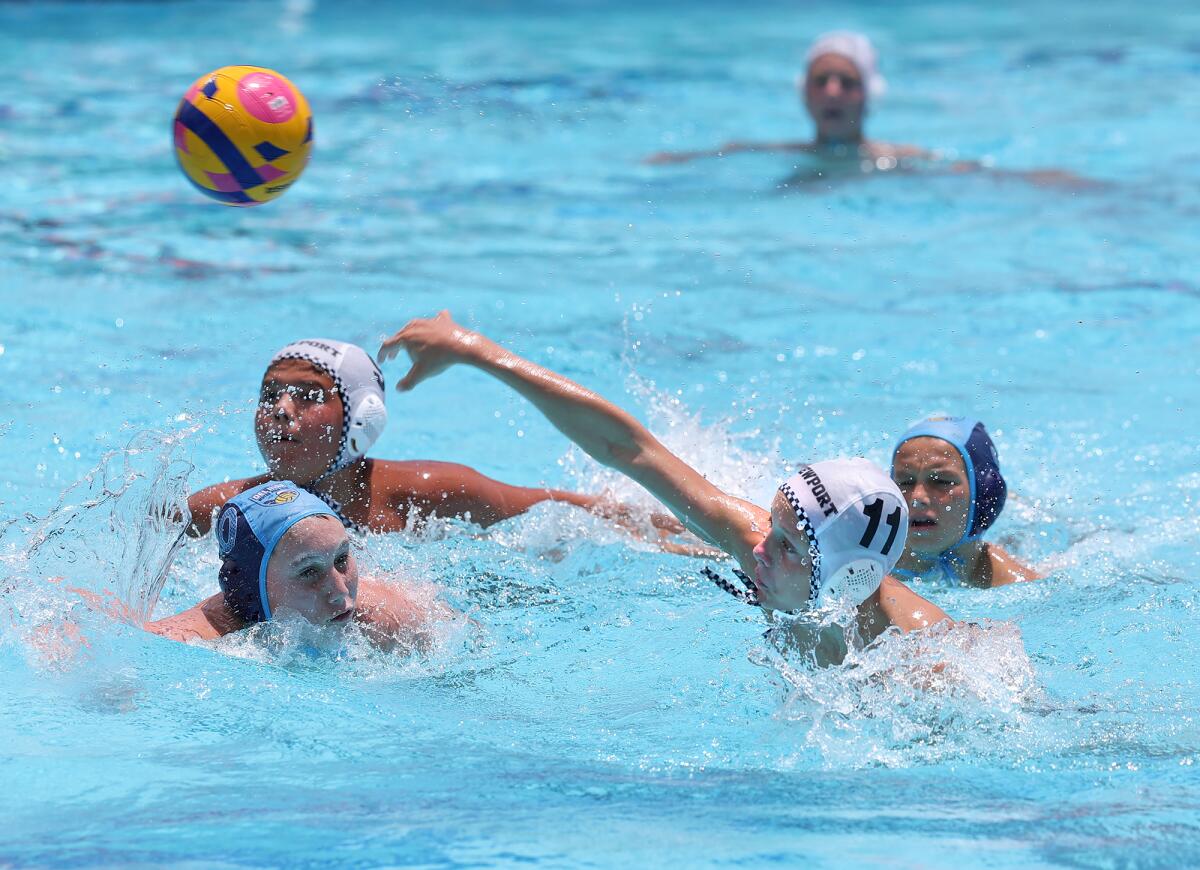
Tanner Thomas (11) of the Newport Beach 12-and-under water polo team throws in a goal on Tuesday.
(Don Leach / Staff Photographer)
Del Mar improved to 4-2 against Newport Beach in the club season, including an 11-9 victory in the Junior Olympic quarterfinals on Monday. But the locals from Newport didn’t quit there, beating Mission in a play-in game to the semifinals, where they edged Vanguard 7-7 (3-1 in a shootout) on Tuesday morning.
Clymer led Newport Beach with four goals in the gold medal match, and Tanner Thomas scored three. Dalton Horne added a pair of goals.

Hayden Stout (10) of the Newport Beach 12-and-under team takes a long shot at the Woollett Aquatics Center in Irvine on Tuesday.
(Don Leach / Staff Photographer)
Playing at center, Evan Shackelford scored a late goal that gave Newport a 10-9 lead, and he also drew eight exclusions and a penalty shot in the final.
“Obviously, I want to score, that’s my priority,” Shackelford said. “But if I have to, I’ll let go of the ball if [the defender] is on my back all of the time. I just want to shoot and score and celebrate with my teammates.”
Shackelford and Thomas helped Newport Beach foul out three Del Mar players. Del Mar finished the game without any substitutes available.
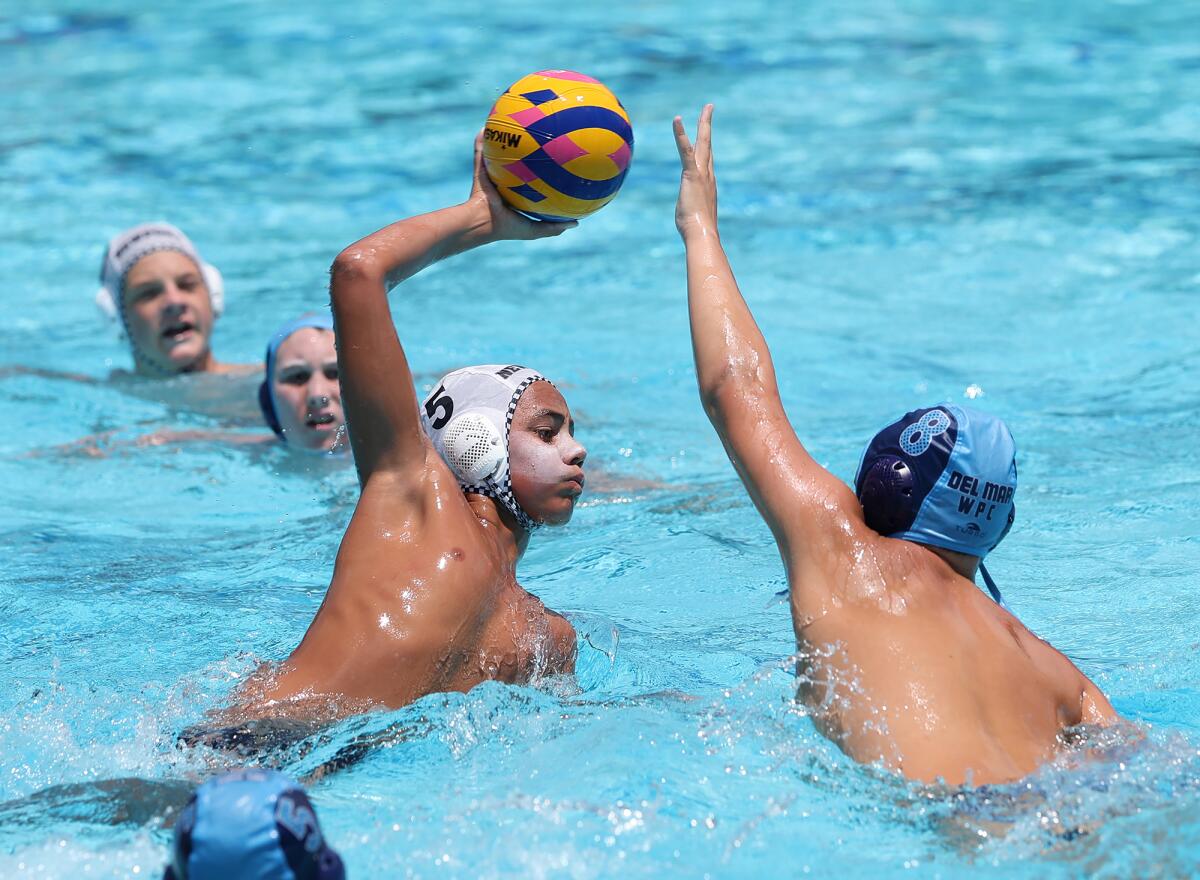
Dalton Horne (5) of the Newport Beach 12-and-under team moves in for a goal in Irvine on Tuesday.
(Don Leach / Staff Photographer)
“That’s our game plan,” Koulouris said. “We tried to find small entry passes, draw the ejections and play quick. That’s what they did … We tried to make some plays in order to put one more kid out, but it didn’t work out. They’re 12, and they’re under pressure.
“It’s a great lesson for them for the years after, right? They’re going to play this team again multiple times in the future, maybe until they go to college. Del Mar is a great program, they work hard and they have a great coaching staff.”
Goalkeeper Finn Breneman made eight saves for Newport Beach, and Hayden Stout had three steals. Other contributors included Stryder Gregory, Griffin Harvey, Oliver Horowitz, Pierson Nichols, Wyatt Robinson, Logan Jameson and Cameron Berman.
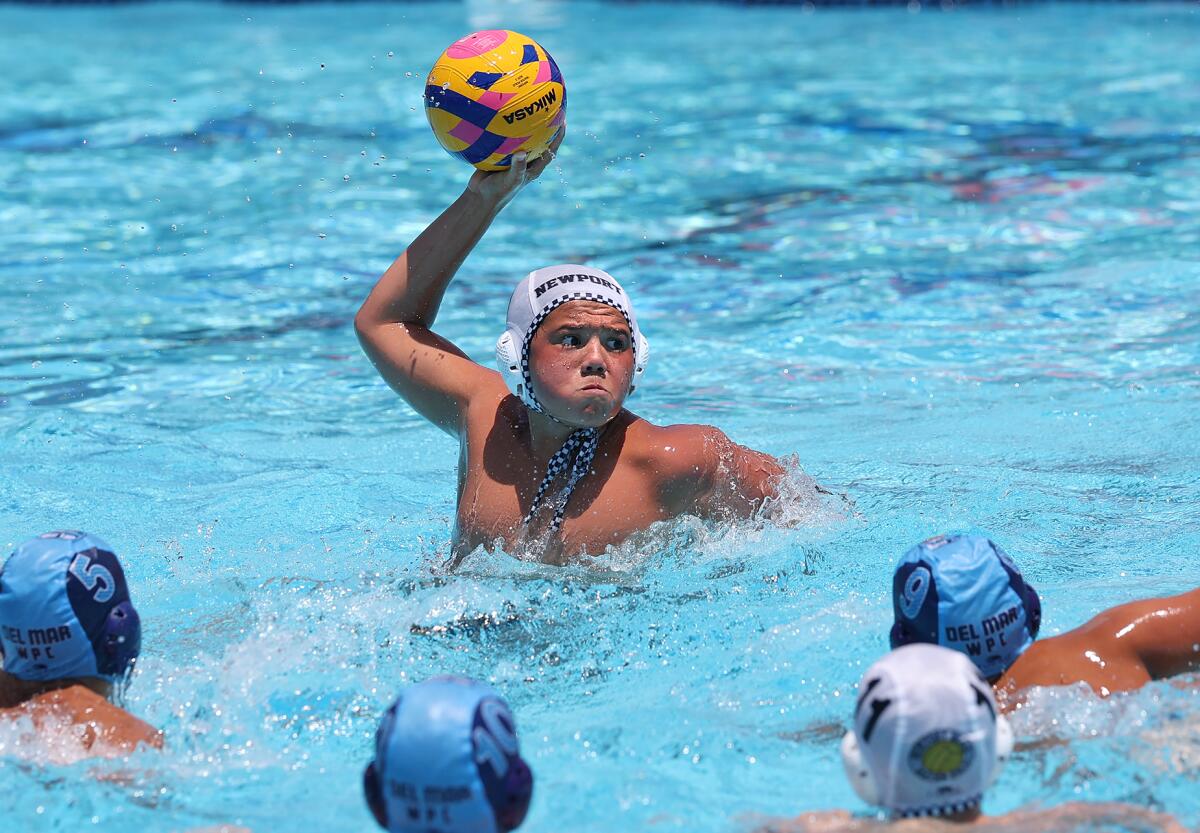
Evan Shackleford (9) of the Newport Beach 12-and-under team fires in a tying goal late in the game against Del Mar on Tuesday.
(Don Leach / Staff Photographer)
Del Mar’s Attila McCollum scored a late equalizer to send the match to overtime, one of his three goals, and Jason Robinson led the winners with four goals.
All of the Newport Beach players will be aging up to the 14-and-under age group next year, and they do hope to meet up with Del Mar again in the future.
“I think we showed up pretty well,” Thomas said. “There were definitely things we needed to work on toward the end. It kept on going back and forth, which does get a little stressful at times. A few adjustments we need to make, and hopefully we can be back here in a few years with the same team and win it all.”
Newport Beach 10Us, Vanguard 12Us earn bronze in top division
Other local boys’ club teams also grabbed medals during Session One of the Junior Olympics. They included Newport Beach Blue 10U (bronze in platinum division), Newport Beach White 10U (bronze in gold division), Vanguard 12U (bronze in platinum division), Newport Beach White 12U (silver in classic bracket), Corona del Mar 14U (silver in gold division), Costa Mesa Aquatics Club 14U (bronze in invitational bracket), Vanguard Silver 16U (bronze in invitational bracket) and Vanguard Silver 18U (bronze in classic bracket).
Session Two, which features co-ed and female age divisions, begins Thursday and runs through Sunday.
Sports
Swerve TV launched Swerve Sports, a new FAST channel dedicated to women’s sports
Swerve TV has introduced Swerve Sports, a free live-streaming women’s sports channel launching on The Roku Channel and Pluto TV with more than 30 content and distribution partners. The announcement was made today by Swerve TV Chair Christy Tanner and CEO Steve Shannon. It is now available on The Roku Channel, Free Live Sports, Lights Out […]
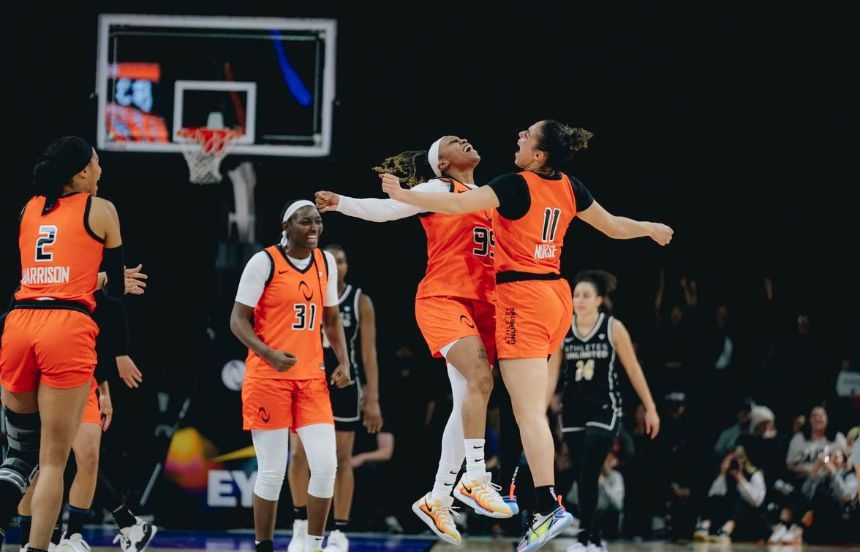
Swerve TV has introduced Swerve Sports, a free live-streaming women’s sports channel launching on The Roku Channel and Pluto TV with more than 30 content and distribution partners. The announcement was made today by Swerve TV Chair Christy Tanner and CEO Steve Shannon. It is now available on The Roku Channel, Free Live Sports, Lights Out Sports, and Zeam. Pluto TV will launch Swerve Sports on August 7, and Anoki along with other platforms will launch the channel later this summer.
Swerve Sports, “Where Women Rule the Game,” is exclusively focused on women’s sports and offers fans 24/7 access to the best in women’s football, basketball, soccer, volleyball, softball, gymnastics, boxing, rugby, and more. It is the second channel from the successful Swerve TV team behind “Swerve Combat,” the leading combat FAST channel with more than 200 live events and 20 million viewers in the past year, delivering year-over-year growth of 215%.
The launch of Swerve Sports by Swerve TV was driven by two clear signals of strong demand for more free, live-streaming women’s sports, particularly among Gen Z viewers. First, research conducted with Toluna shows that Gen Z sports fans want more live-streaming women’s sports, with basketball, gymnastics, and combat being the most in demand. Second, since its launch in April 2024, Swerve Combat’s weekly women’s fight night has consistently outperformed the other six nights of the week.
Swerve TV is backed by global media leaders known for building innovative, profitable startups and public companies. This includes Tanner, who has created leading live-streaming multi-platform businesses for CBS and other global media companies; Shannon, who launched Roku’s content and advertising monetization business; and Swerve Head of Content Dan Keston, an award-winning producer and media executive. The distinguished Swerve Sports Advisory Board includes Amy DuBois Barnett, Rich Battista, Nathalie Bordes, Emily Christner, Roger Jackson, Susanne Mei, Michelle Milford Morse, and Matt Singerman.
Tanner understands that this is a way to raise visibility for women’s sports: “Swerve Sports is giving fans what they want – more women’s sports, free, live-streaming, 24/7. We’re creating new opportunities for the all-stars of women’s sports while leveraging the expertise of our all-star leadership team,” noted.
Meanwhile, Shannon said it is a raising of the bar regarding the possibilities of women’s sports: “With the launch of Swerve Sports, we’re applying the same innovative approach that fueled the breakout success of “Swerve Combat. We’re redefining what’s possible in women’s sports for fan engagement with athletes, teams, and leagues,” expressed.
In addition to live women’s sports, Swerve Sports will also feature highlights, series, and films about women athletes and those who have been pivotal in the advancement of women in sports. Content partners include Athletes Unlimited Pro Volleyball, Athletes Unlimited Pro Basketball, Athletes Unlimited Softball League, Women’s Football Alliance, Red Bull, Outside, USA Cheer & Stunt, Freestyle Trampoline Association, “Queen & King of the Court,” Professional Fighters League, Invicta Fighting Championships, Bare Knuckle Fighting Championship, and STIHL TImbersports. Swerve Sports will regularly feature programs such as “Prime Time with Athletes Unlimited,” “Lunch Break with Outside,” “Weekend Adventures with Red Bull,” and “Monday Night Football with Women’s Football Alliance.”
Sports
Recess Matters – California Golden Bears Athletics
Cal Athletics Cal student-athletes are making an impact in the surrounding community by collaborating with local schools to promote positive play, early college awareness, and provide literacy support for students in need. This feature originally appeared in the 2025 Summer edition of the Cal Sports Quarterly. The Cal Athletics flagship magazine features […]
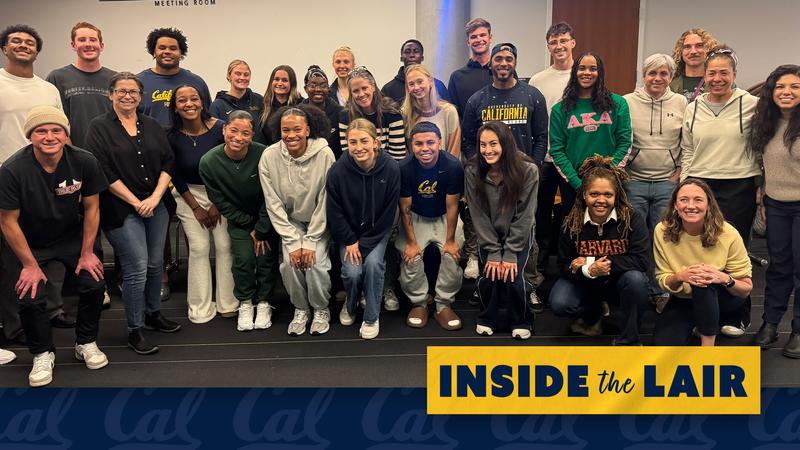

Cal Athletics
Cal student-athletes are making an impact in the surrounding community by collaborating with local schools to promote positive play, early college awareness, and provide literacy support for students in need.
This feature originally appeared in the 2025 Summer edition of the Cal Sports Quarterly. The Cal Athletics flagship magazine features long-form sports journalism at its finest and provides in-depth coverage of the scholar-athlete experience in Berkeley. Printed copies are mailed four times a year to Bear Backers who give annually at the Bear Club level (currently $600 or more). For more information on how you can receive a printed version of the Cal Sports Quarterly at home, send an email to CalAthleticsFund@berkeley.edu or call (510) 642-2427.
If there was one thing Ari Manrique always looked forward to at school growing up, it was recess.
For about 30 minutes each day, Manrique – a former captain for the Cal women’s soccer team – was free to run around and express herself. It was an opportunity for her to take a break from learning in the classroom to have fun, spend a little quality time with her friends, and prove that she belonged athletically on the playground.
But recess doesn’t mean the same thing to every child.
For many others, it isn’t always a positive experience, which is why last year the Cameron Institute collaborated with the Berkeley School of Education to launch the “Critical Service Learning and Community Building Through Sport” course for Cal student-athletes, aimed at collaborating with local schools to promote positive play, early college awareness, and provide literacy support for students in need.
“It’s been our vision for the Cameron Institute to provide a pathway for student-athletes to go deeper in their service learning and collaboration with our local community,” Cameron Institute Director of Community Engagement Jessie Stewart said. “Our goal was to leverage our assets here at Cal, and we are grateful to have found an amazing partner in the Berkeley School of Education to develop a section of the Practicum in Education that takes a critical service learning focus.”
While the Cameron Institute has helped facilitate volunteering at local schools for years, the new course has provided a more structured approach to tending to the needs vocalized by local schools, all while simultaneously giving Cal student-athletes the chance to earn school credits as they contribute to their surrounding community.
The course aims to address inequities such as access to play and exposure to sport, early college awareness, and disparities between socioeconomic gender and racial groups, with a primary focus on promoting the importance of positive play within inclusive environments that are safe and enjoyable for all.
“We want to be more than just visitors within our local schools. We are honored to be invited into schools across our local community, and we aim to be true partners with a positive presence who provide value,” Stewart said. “The class also provides an opportunity for our student-athletes to learn and apply the approach of community-centered engagement, gain critical perspective, and take that back and become leaders on their own teams and within their communities and lives beyond Cal.”
After first hearing of the course, Manrique – who works with special needs students at Emerson Elementary in North Oakland – quickly embraced and fell in love with the work she is doing, so much so that it has sparked her continuing interest in working with the special needs community.
“When I got here, I saw that there is such a need for the next generation to receive this kind of attention and care, and that educators as a whole are spread so thin,” Manrique said. “You don’t realize how big it is to hold a kid’s hand and run with them around the playground. Instead of taking their outside time to just sit down somewhere, now they’re interacting, learning how to play tag. It’s a work in progress and it takes showing up every day for those routines to develop and for them to trust you. But once it’s there, it’s an incredible thing.”
Manrique’s athletic prowess that leads to building confidence and social skills is not a universal trait for all children, but she has been able to lean on other experiences from her youth to connect with the students and show them that no matter what their background, they can achieve big things.
“I didn’t grow up around many college-educated people who could tell me, ‘College isn’t scary.’ It wasn’t something anyone in my close circle had navigated and completed,” Manrique said. “I was lucky enough to have athletics as a safety net under me, but not everybody has that, so you try to understand that platform you have. The idea of being able to help bridge the equity gap for these kids is super important.”
In addition to physical activity, there is also an emphasis on reading support, which has seen Cal programs such as women’s basketball, football, track & field, and men’s & women’s rowing help make an impact with middle school students at KIPP Bridge Academy.
“Our students really look forward to having someone help them with their work. They love talking to the players, asking how they got to college, what they do at school and what their life is like,” KIPP Bridge Academy Student Support Specialist Cameron Stephenson said. “You can see growth in the reading levels of my reading intervention students who have worked with the tutors. Having more adults in the room helps give the kids, some whom have severe learning needs and disabilities, more one-on-one attention. The tutors help to teach them how to address their frustrations and provide support that goes beyond reading.”
The flexibility of the “Critical Service Learning and Community Building Through Sport” course, which requires between 1.5 to 7.5 hours per week working with kids at a local school, allowed Manrique to earn units even while she is in season. It’s another one of many reasons why she has encouraged her friends and teammates to follow her lead in taking the class as well. The course combines weekly readings and reflective assignments with comprehensive support – including initial onboarding and regular one-on-one advising. Schedules are tailored in partnership with the school site to accommodate training, travel, and competition demands throughout the season.
“It’s a beautiful thing that even people who don’t want to be educators get something out of working with kids and gaining a larger perspective,” Manrique said. “Being a student-athlete at Cal, we can take things for granted and get stuck focusing on excelling in sports and school, but I was fortunate to be in a place where I had great academic, athletic, and holistic support that gives you the opportunity to give back. It’s really about becoming a fully well-rounded individual so that when you walk out of here, you feel prepared to go out into the world and make a true difference. That’s something this class and the Cameron Institute in general have given me the ability to do.”
Looking ahead, the Cameron Institute aims to expand the program to engage even more student-athletes across Cal Athletics teams, and to continue to deepen collaboration with local public schools and aligned community-based organizations focused on expanding equitable access to sports, positive play and academic enrichment.
The Cameron Institute was made possible thanks to a generous endowment gift by C. Bryan Cameron in 2019. Visit CalBears.com/CameronInstitute to learn more about the Cameron Institute and the impactful work from our Community Engagement pillar.
Sports
2025 Spartan Volleyball Schedule Revealed – SJSU Athletics – Official Athletics Website
SAN JOSE, Calif. – The 2025 San José State volleyball schedule is complete after changes to the Mountain West schedule were announced on Wednesday with the addition of Grand Canyon to the conference. The Spartans will start the year at home with back-to-back home matches with UC Santa Barbara on August 29 and 30. The […]

SAN JOSE, Calif. – The 2025 San José State volleyball schedule is complete after changes to the Mountain West schedule were announced on Wednesday with the addition of Grand Canyon to the conference.
The Spartans will start the year at home with back-to-back home matches with UC Santa Barbara on August 29 and 30.
The team then travels to future (and past) conference foe Hawai`I for the OUTRIGGER Invitational, Sept. 3-5, where the Spartans will play Utah Valley, St. John’s and the Rainbow Wahine.
SJSU does not leave California for the rest of September, playing at the Mustang Invitational against California and Cal Poly September 13 and 14, a home match with Santa Clara on the 16th, and at the USF Challenge, September 16-19, against the Dons twice and CSUN.
The Spartans open the 18-match conference season with home matches against UNLV and San Diego State on September 25 and 27. The team will travel to Logan and Fresno for the first two road matches of the schedule.
SJSU will play five home matches in October – Nevada (10/9) Air Force (10/11) Fresno State (10/18), Grand Canyon (10/23) and New Mexico (10/25). The team will end the home portion of the conference schedule in November with matches against Boise State (11/13) and Utah State (11/15).
The 2025 MW Championship will be played November 26-29 at the Cox Pavilion in Las Vegas.
#AllSpartans
Sports
The hierarchy of Wildcat volleyball: Wildcat alum signs to play professional VB
By Greg Peters As far as summer high school volleyball pick-up games go, last Tuesday’s game inside the River Falls Public Montessori’s gym had a different feeling to it. While the knee pads are sliding up over the calves and the ponytails are being rubber-banded, normal pre-pick-up game chatter for the River Falls Wildcat girls […]
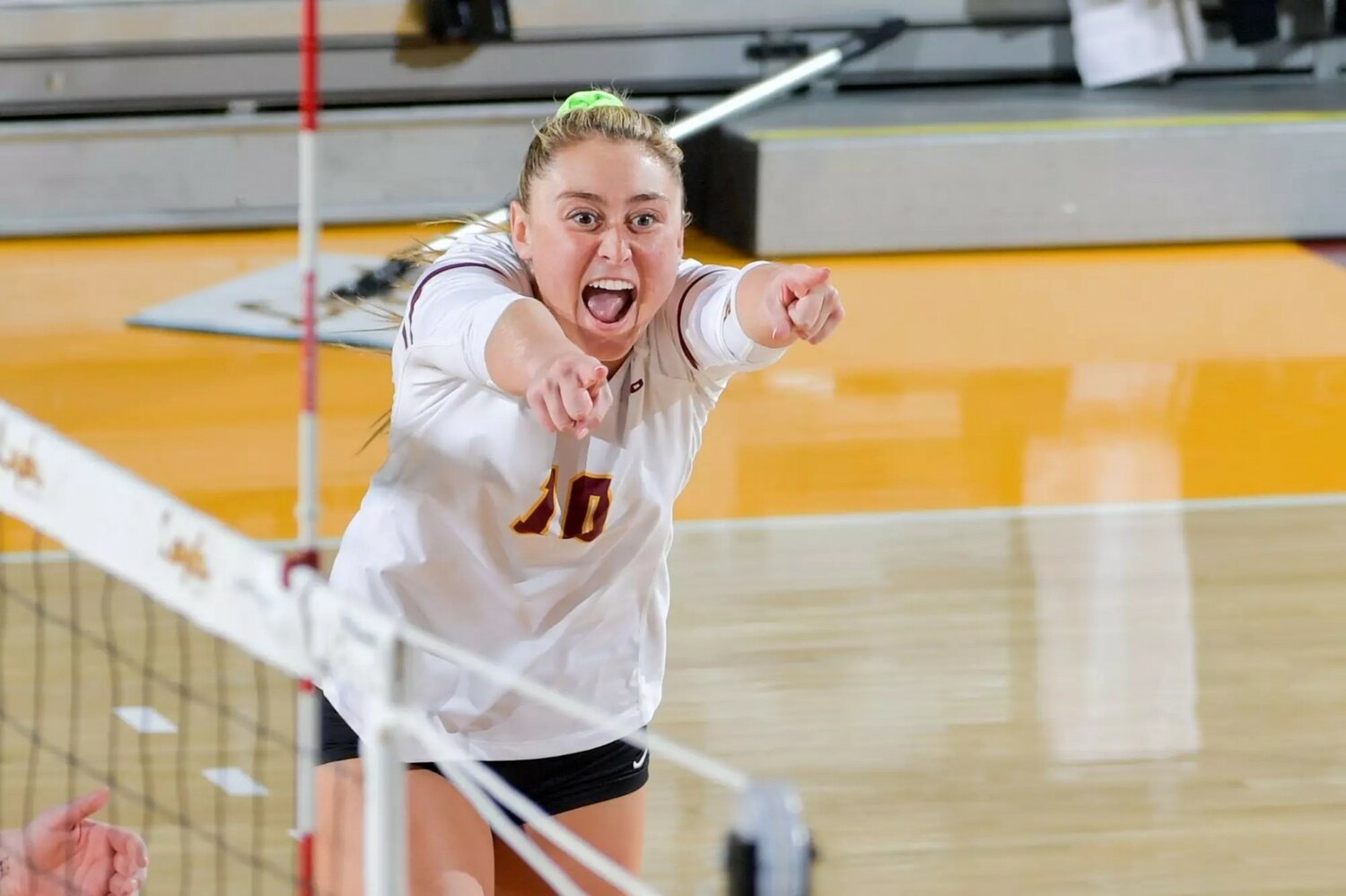
By Greg Peters
As far as summer high school volleyball pick-up games go, last Tuesday’s game inside the River Falls Public Montessori’s gym had a different feeling to it. While the knee pads are sliding up over the calves and the ponytails are being rubber-banded, normal pre-pick-up game chatter for the River Falls Wildcat girls might include Brooke Dusek’s latest Tik Tok. It would also likely include the latest summertime high school dating drama discussions.
Not this day.
River Falls volleyball royalty was in the gym this hot humid July day and the current crop of Wildcats were in cool mode acting 10 years their senior with their visitor.
“I’m grateful to be able to poke my head in here and play a little bit with the girls,” said River Falls class of 2020 grad Emily Banitt. “They’re playing faster than we played in high school. I haven’t seen them play in person in a long time. I told Brooke (Dusek) that her out of system hitting is going to take her so far.”
“I love when we actually get them (Wildcat volleyball alums) back in town and they want to be here in the gym,” said Head Coach Sara Kealy.
Kealy has had 19 of her players graduate to play college volleyball in the last eight years alone, none receiving more accolades than Banitt.
The 5’10” outside hitter with a Spiderman-like vertical leap helped the Wildcats to four straight WIAA state tournaments in volleyball and earned all-state honors her senior season. She was named to the All-Missouri Valley Conference Freshman Team her first season at Loyola University Chicago and when the school jumped to the Atlantic 10 Conference in 2022, Banitt garnered all-conference honors her junior and senior years. Banitt had a fifth year of eligibility due to the 2020 Covid season, and she was named first-team all-conference at the College of Charleston, where she also played beach volleyball in the spring.
“Beach volleyball was so fun,” said Banitt. “I wish I would’ve played beach all four years. The transition was a little confusing at first, but it was easy to pick it up once you got the hang of it.”
Banitt finished her college indoor career with 1,367 kills.
“Emily understands the game so well because of the way she sees the court,” said Kealy. “She’s not robotic out there. It’s fluidity and she takes what the defense gives her.”
When the Wildcat volleyball team finished state runner-up in 2017, Banitt was a sophomore starter. The majority of the current Wildcat team was in third or fourth grade.
“Amelie (Pankonin) was my ball girl,” said Banitt realizing the passage of time.
“Do you think it was a coincidence I put Amelie with you?” Kealy asked Banitt rhetorically. “No, I put her with you because I wanted her to be you.”
Pankonin is on the right track. She recently received national recognition playing at the AAU Junior National Tournament in Orlando in June for Northern Lights Volleyball Club. Pankonin has already received a plethora of Division 1 offers to date.
Banitt is polite and cordial off the court, but on it, she has the intensity of a cornered honey badger.
“I was trying to show Brooke (Dusek) and Amelie (Pankonin) how to push the girls on both sides of the net in practice,” said Banitt. “That makes the team better.”
Banitt is smart enough to know how the younger girls look up to her and humble enough to care.
“I looked up to Izzy Barr when I was younger,” said Banitt. “Finding the players that were always competing hard in the gym and giving it their all was the player that we looked up to and wanted to be. It touches my heart because I want to be a good example of what a good teammate looks like not only in skill but hyping up teammates.”
Banitt, who has a degree in exercise science from Loyola University Chicago and an MBA from the College of Charleston, wasn’t just playing for recreation; she’s punching the workout time clock of her own. Banitt is now the second former Wildcat volleyball player to sign a professional contract. She’ll be leaving on Aug. 17 to play in Zagreb, Croatia. Zagreb is the capital city in Croatia, with a metro area population of about one million people. Former Wildcat middle blocker Marissa Stockman played in France last year and will be playing in Greece this year.
“My college coach said if there’s any itch to do it, just try it for a year,” said Banitt. “I’m going to try it and see what happens.”
“To be able to say she plays professionally is amazing,” said Kealy.
“The volleyball world has just blown up the last couple years,” said Banitt about all the different professional volleyball opportunities for women.
“Women’s sports, in general, have taken off,” said Kealy. “I obviously want to teach skills and goal setting and how to show up on time and responsibility, but volleyball is a game Emily can play her entire life.”
“Not only has Sara (Kealy) taught us volleyball skills but so many life skills, too,” said Banitt. “I learned those at a young age because of Sara. She not only coached us for volleyball, but she coached us how to be better people.”
Banitt brought her winning ways to the Montessori gym on a hot Tuesday in July for some pick-up volleyball. Her former ball girls weren’t little ball girls anymore. They were playing fast, crushing the ball, and even blocking Banitt once or twice. One errant shot ricocheted off senior Addy Nesbitt’s shoe and smacked Banitt on the side of the face as Coach Kealy yelled the score, “8-7!”
Every brow in the gym lifted with a collective nervous gasp from the current Wildcats as their childhood heroine was welcomed back with a volleyball to the face and somehow, at that moment, seemed like a regular human.
“Oh, it’s totally fine,” said Banitt smiling and shaking her head. “That’s volleyball.”
Every point the rest of the set came courtesy of Emily Banitt.
“Did you see her cross-court side hit?” whispered one current Wildcat player.
“That was so sick,” said another girl in response.
And the hierarchy of Wildcat volleyball royalty was quickly restored to its rightful place.
Keywords
River Falls Wildcats,
volleyball,
Emily Banitt,
Croatia,
River Falls,
Wisconsin
Sports
PSAC 75th Anniversary: Historic Timeline
Pennsylvania State Athletic Conference Timeline Celebrating the 75th Season of Competition (2025-26) 1926 – A new Constitution of the PSNAA is rewritten, led by East Stroudsburg’s Dr. Tracy Allen, Principal of the institution May 1927 – L.P. Hill of Cheyney Training School for Teachers raises the question why they are not included in the Association. […]


Pennsylvania State Athletic Conference
Timeline
Celebrating the 75th Season of Competition (2025-26)
-
1926 – A new Constitution of the PSNAA is rewritten, led by East Stroudsburg’s Dr. Tracy Allen, Principal of the institution
-
May 1927 – L.P. Hill of Cheyney Training School for Teachers raises the question why they are not included in the Association. By September, this is remedied by the Principals, but the caveat in the Constitution includes members are not “obligated to participate or enter into any athletic relations with any other members” of the Association
-
December 1938 – The Athletic Directors meet to work on scheduling among members, in total 42 events are scheduled to be contested among agreeable institutions. No one is required to play anyone though.
-
December 1, 1947 – Board of Presidents of the State Teachers Colleges adopt proposal to form an Athletic Conference. Nothing occurs for two years as discussion held about who bears the cost of such an undertaking
-
First Executive Committee of the PSTCAC is George Miller (Indiana) President; Oscar Liljenstein (E. Stroud), Vice President; and John Hock (Bloomsburg), Secretary/Treasurer
-
December 1951 – Tennis and Swimming added as conference sports in addition to track, soccer, basketball and football.
-
May 1952, Waldo Tippin of Clarion raises the question about how Conference should handle the eligibility of Korean War Veterans. Conference’s accepts NCAA rules for Veterans and an influx of vets finds their way onto many athletic teams across the membership.
-
From 1951 to 1953, the “districts” are not used and the Conference employs the “Rocky Mountain Point System” to determine champions. To earn points in the system teams must play a minimum number of contests against other Conference members (Football – 4; Basketball – 8; Baseball – 4; Soccer – 2). A meet for wrestling and track and field would determine conference champions in those sports.
-
The Rocky Mountain System had its critics and the Conference then adopted the Saylor System, created by a Penn State University economist to determine a rating point system to determine champions. In addition to the football, basketball and baseball minimums above, Soccer, Tennis, Golf and Swimming were all set with a three contest minimum
-
By August 1956 Divisions are created, 6 members in the West and 8 members in the East, Shippensburg then moved to the West but only for basketball in 1958.
-
1960 – The Pennsylvania State Legislature creates “State Colleges”, dropping “Teachers” from the campus names. The Conference follows and renames the league the “Pennsylvania State Colleges Athletic Conference”
-
By April of 1960, all 14 campuses participate as members of the National Association Intercollegiate Athletics (NAIA). Some have chosen dual membership in the NCAA including Bloomsburg, Lock Haven, Millersville, Shippensburg, Slippery Rock and West Chester. Membership numbers in each association fluctuate until 1973 when all are members of the NCAA, with a few NAIA members.
-
February 1966 – Most likely out of political envy, the Board of Presidents strips Indiana of its membership privileges after it receives “University” status from the PA State Legislature. By the Fall of 1971, under the leadership of Athletic Director Herm Sledzik, Indiana returns to full membership in the Conference
-
West Chester had also joined the Middle Atlantic Conference in 1958 to associate with many of the Philadelphia area schools that are now Division I. By 1971 in response to dwindling participation in events by West Chester, the Conference adopts a policy that requires entry in their events or face a year of ineligibility in all events a year later.
-
November of 1974, the very first specific discussions to include women’s teams in Conference activities occurs and is met with limited enthusiasm, despite the passage of Title IX in 1972
-
In the early 1970s state employees were granted option to collectively bargain. In the 1974 contract with faculty, the PA Department of Education includes the position of Director of Equal Opportunity in Sport (DEOS) on each campus. The position reports directly to DOE in Harrisburg. Secretary of Education John Pittenger felt as though campuses were being too slow in affirmative action programming and activities and thus forced campus hands in this area with this position. The DOE was “committed to the elimination of practices, policies and programs which result in the limited participation for women and minority students in college athletic programs”
-
October 28, 1974, Millersville’s Assistant Athletic Director Marge Trout was named the first DEOS on a member campus.
-
By Fall of 1975, member institutions had varied Divisional status in the NCAA as “divisions” had just been created in the Association. West Chester was designated by the NCAA as Division I, but football was Division II. In total 8 members are in Division II and 5 others in Division III. A few members, particularly in the Western Division are also members of the NAIA.
-
The Divisional alignment debate rages through 1976 when the Cheyney Athletic Director makes four different motions to align the entire conference in one affiliation. For Division II – defeated; for Division III – defeated; for allowing DII/DIII option – defeated and for NAIA/NCAA membership – defeated. The debate continued.
-
Over a debate of whether PSCAC members should conduct Spring Football Practice, which is adopted as policy, West Chester resigns from the Conference in March 1977.
-
November 1979, East Stroudsburg head football coach Denny Douds speaks to the Athletic Directors encouraging a single level membership and national association affiliation. IUP Athletic Director Herm Sledzik forwards a motion that by Fall 1980 all Conference members would align to NCAA Division II and permit Spring Football practice. The motion passes 8 to 5.
-
From 1974 to 1977, women’s sports development moved ahead marginally, until February 1977 when Dr. William Duncan of Millersville, under the urging of Marge Trout, pushed the Board of Presidents to conduct a study regarding the inclusion of women in the Conference structure. Following a study in the Fall of 1977 a Committee was formed to rewrite the Conference’s Constitution to include women’s athletics, which was led by Duncan
-
The new Constitution, included “Divisions” for both men and women with separate regulations operating each Division, but with some over-arching governance. The Board of Presidents adopted this new Constitution in the Fall of 1977. Each “Division” (Men’s or Women’s) would alternate the presidency of the over-arching Conference, and as a result Marge Trout became the first female president of an athletic conference in the U.S. The Sporting News reported the tenure of Trout with an article entitled “And Now a Gal Conference Boss” in April 1978.
-
By May 1981, under the leadership of Athletics Director Dick Yoder, West Chester returns to full membership in the Conference
-
July 1983, PSAC hires first commissioner, Don Kelley, former Athletic Director of Illinois State University. Kelley would serve until 1989. Kelley establishes the first conference office in Hershey, PA.
-
Fall 1989, Kelley is replaced as Commissioner by Charles “Tod” Eberle, former Athletic Director of Lock Haven University where he also served as a professor in the Physical Education department.
-
Spring 2006, Mansfield elects to drop Football as an NCAA sport, leaving the Conference with 13 members playing football. Long Island University – CW Post joins the PSAC as an Associate Member in football and field hockey and will compete through the Fall 2012 seasons in both sports.
-
Summer 2010, PSAC incorporates as a non-profit 501(c)3 corporation, severing ties with the PA State System of Higher Education as an affiliated organization.
-
2019, For the first time in the Conference’s history, a full member from outside the boundaries of the Commonwealth of Pennsylvania joins the PSAC as Shepherd University of West Virginia joins.
Majority of Notes Taken from:
A History of the Pennsylvania State Athletic Conference: An Analysis of Selected Critical Incidents.
Doctoral Dissertation
Dr. Allen Hall, University of Akron, 1984
-

 College Sports2 weeks ago
College Sports2 weeks agoWhy a rising mid-major power with an NCAA Tournament team opted out of revenue-sharing — and advertised it
-

 Motorsports3 weeks ago
Motorsports3 weeks agoTeam Penske names new leadership
-

 Sports2 weeks ago
Sports2 weeks agoNew 'Bosch' spin
-

 Fashion1 week ago
Fashion1 week agoEA Sports College Football 26 review – They got us in the first half, not gonna lie
-

 Sports1 week ago
Sports1 week agoVolleyball Releases 2025 Schedule – Niagara University Athletics
-

 College Sports3 weeks ago
College Sports3 weeks agoMSU Hockey News – The Only Colors
-

 Sports2 weeks ago
Sports2 weeks agoE.l.f Cosmetics Builds Sports Marketing Game Plan Toward Bigger Goals
-

 Health1 week ago
Health1 week agoCAREGD Trademark Hits the Streets for Mental Health Month
-

 College Sports2 weeks ago
College Sports2 weeks agoBuford DB Tyriq Green Commits to Georgia
-

 Youtube2 weeks ago
Youtube2 weeks agoWill LeBron James request a trade? 🤔 Windy says MULTIPLE TEAMS would make offers 👀 | NBA Today




























